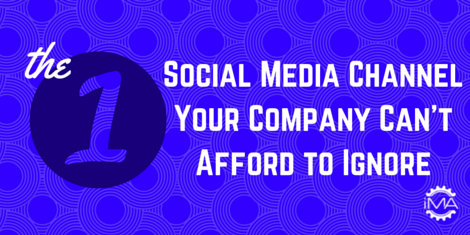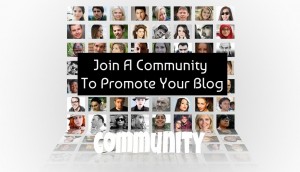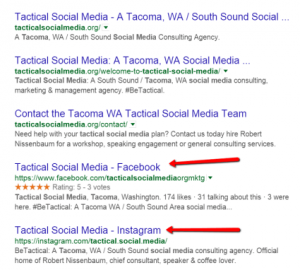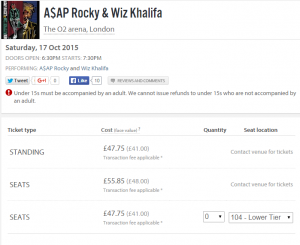Are You Making the Most of Your Company’s LinkedIn Profile?
 LinkedIn: It’s the working professional’s best social media ally, and yet a large number of people and businesses are not making the most of its serious networking and sales potential.
LinkedIn: It’s the working professional’s best social media ally, and yet a large number of people and businesses are not making the most of its serious networking and sales potential.
Why is this?
We reckon it might be because people don’t actually know how to optimize their pages. This is especially true for businesses and company pages. Like any other social media platform, LinkedIn has its own set of purposes and audience members, and when done correctly, it can open up a world of opportunity for growing your customer base and influence within your industry.
So how do you ensure your LinkedIn page is optimized?
Establish Guidelines
First, create a LinkedIn guidelines document. If you haven’t already established a guidelines document for all the social media platforms your company exists on, do it now. This is especially crucial for LinkedIn, where audience members and reach can be much more niche and tailored to your specifications.
Guidelines help establish the tone, voice, and content matter that goes into each social media account, and guides your social media strategy. While you will definitely want consistency amongst all your social profiles, each platform can serve a different purpose and can take on a different role.
Consider for example, while you may utilize Twitter for real-time customer service, or show a behind-the-scenes aspect of your company on Instagram, you may want to use a more professional face on LinkedIn that really displays the quality of your brand.
Complete Your Profile
It can’t be said enough that an incomplete profile is simply a waste of time – yours and your customers’. In the past, the fine people at LinkedIn have reported that completed profiles receive 40 times more opportunities (and therefore leads, business, or work) than those with incomplete profiles.
Complete profiles include:
- A thorough bio. Use descriptive language that includes themes from your company’s value proposition to show readers what you do and why you do it best, or what sets you apart from competition. LinkedIn Company pages are also very Google friendly, so you’ll want to use keyword optimized copy, especially in the first lines of your page content. Users of LinkedIn can also search within the site itself for keywords, so be sure to include words that mean something to your business, industry, and product or service focus.
- An avatar with your logo or identifiable image. Make it high quality and be sure it is the correct size so that the image is not stretched or condensed. Consider using the same image from your Twitter or Facebook, so you are quickly recognized across platforms. Easy enough.
- Location and contact information. Make it easy for people to find your business or contact you. If it’s too difficult for people to reach you, they won’t. You can also create separate pages for each location of your business. This makes it so customers with specific geographical locations find the branch of your business that is most useful or relevant to them.
- Employee profiles connected to it. Customers and potential customers want to see the faces behind the company. This also makes for a very easy way to grow your organic network. Naturally your employees are connected to many other people and businesses, which brings a large circle of people closer to you, and others more easily able to find you through these connections. Having your employees connected to your company page can also prove advantageous when looking to hire new recruits.
- Links to important pages on your website. Linking to pages such as the services you provide, can also help you to track the efficacy of your LinkedIn efforts in driving potential customers to convert. Even better, is if you can create a tailored landing page on which LinkedIn connections can navigate to. Landing pages are especially crucial for social media. People who travel to your website through social media have already taken a step further in their interaction with your brand than the average person, so it’s ok, or better even, to send them to a specialized page with added information or a form, rather than your homepage.
12 sneaky seo tips for your linked in page from Inbound Marketing Agents
Join Groups
One key aspect to finding leads and influence within your industry, particularly if you’re a B2B company, is to join targeted groups on LinkedIn. Do a search in groups for your chosen keywords that you typically try to rank for. These include the industry you are in, products or services you provide, or general interest categories based on your audience.
LinkedIn Groups can also be based on location, so be sure to target those within your regional scope if need be. Decide what types of groups you want to become a part of, and categorize them. You’ll want to join groups who are your ideal customer profile, and also who can be partners in business, or influencers for your company and mission.
For example, if your service caters to small businesses, there are a plethora of groups on LinkedIn meant for small business owners that you can join. You do need to be selective with the groups you try to join, however.
LinkedIn’s newest update makes all groups closed, so you must be approved to join. If it appears you’re just trying to join any group to get your name out there, chances are you won’t be let in in the first place.
Groups are great for companies because not only are you able to interact through the group directly with potential customers, but you can also gain insight into their wants and needs. Groups also create a niche platform for you to publish content in, but remember, you really want to utilize groups as a way to listen to the problems that others have. Engage by providing meaningful information, or answer questions where you can.
Publish Additional Content
Now comes the important stuff, publishing. LinkedIn has a few different ways of getting your content out onto its platform, so make sure you know how to differentiate between them:
1. Company Page Updates: These are ‘status’ like updates where you can include a short news brief, announcement, or include a link or content. You can choose to include any number of things in your updates: curated content that you find relevant to the professional nature of your company, a link to a page on your website or specific product, a link to a post on your blog, a job posting, or just straight up relevant and useful original content.
What’s great about these company updates is that they can be completely tailored by audience. Share with all your followers, share publicly, or customize what you share for specific professional interests. Target a specific audience based on geography, job function, industry, company size, or seniority. In being able to target specific audience members completely, it’s possible to increase engagement with more relevant connections.
2. Second is publishing within groups. As discussed above, groups are great soundboards for listening to and connecting with others within your industry, or with customers, or potential customers.
Be warned though: LinkedIn is particularly protective of its groups. If you publish too much, without contributing to discussion or engaging with others through likes and comments, you can be marked as spam and get blocked.
Take groups as an opportunity to respond to thoughts and answer questions through your areas of expertise. If someone is looking for help with a particular issue, and you can provide a solution, do it!
Posting original content is a great way to increase your brand’s credibility as being an authority in your industry, but know that in large groups, you may not always get the level of engagement that you want. Try to identify the types of published posts within groups that people find the most compelling, and see where you and your message fits in. With time and patience, it’s a surreptitious way of social selling that can lead to others being impressed by your helpfulness, thus turn to you in the future, or recommend you to others.
3. Have your employees and executives publish on their personal LinkedIn pages. When your employees post relevant original content, or establish themselves as industry thought leaders, this can enhance your image as a company and brand. If they include links to your company page, their connections can more easily be led to you. If they include links to your website, then you’ve created backlinks to your site which can help with traffic and your page rank.
4. Finally, there is LinkedIn Pulse. LinkedIn Pulse should be used in combination with your company’s blog, but again, can take a more professional tone. Keep your content focused and succinct, but still take to a purpose of providing valuable information, not self-promotion. Consistently publishing in LinkedIn Pulse ups your credibility stock, and allows other professionals to find your influence.
Digital & Social Articles on Business 2 Community
(50)
Report Post




